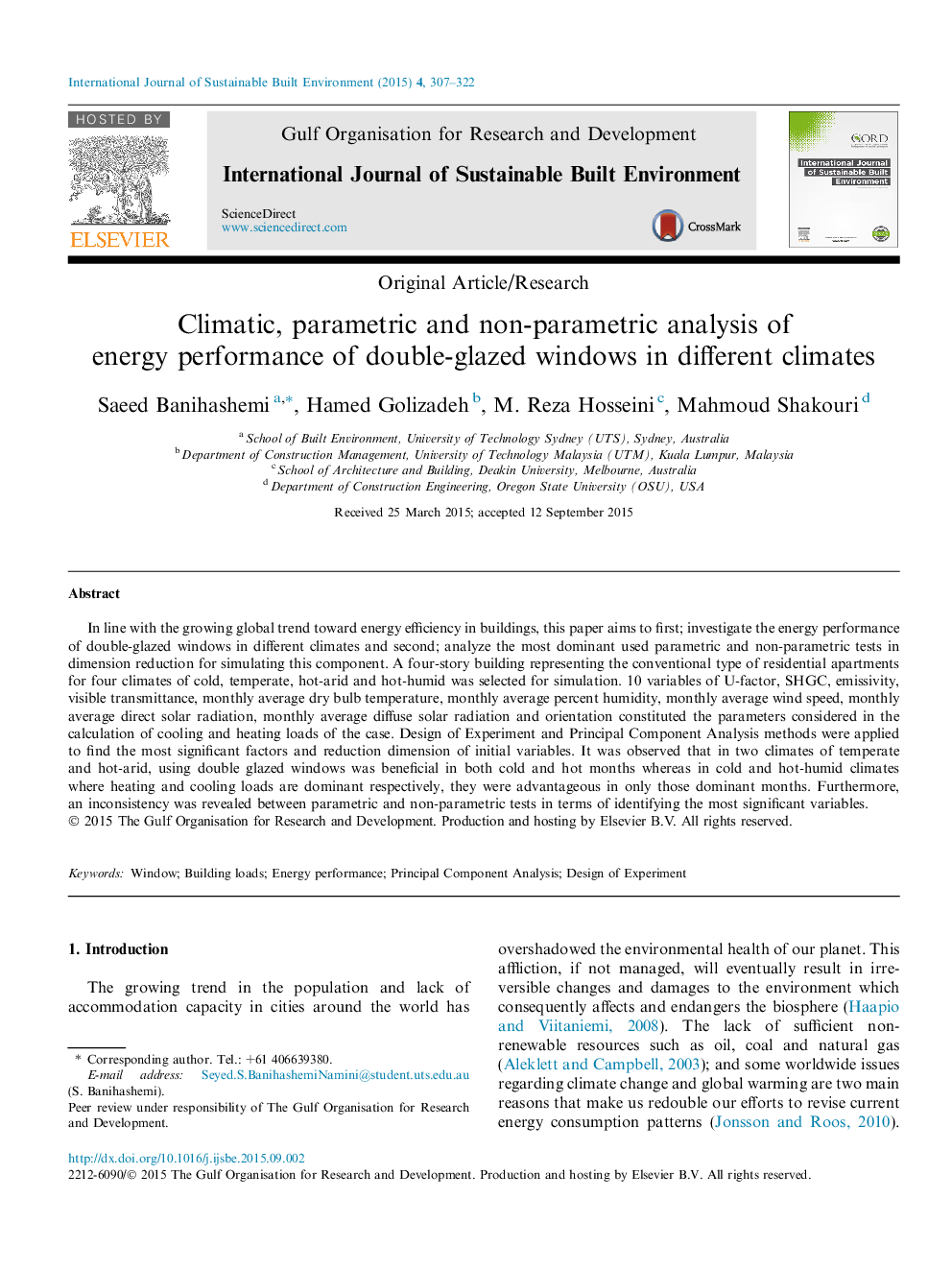| Article ID | Journal | Published Year | Pages | File Type |
|---|---|---|---|---|
| 214774 | International Journal of Sustainable Built Environment | 2015 | 16 Pages |
In line with the growing global trend toward energy efficiency in buildings, this paper aims to first; investigate the energy performance of double-glazed windows in different climates and second; analyze the most dominant used parametric and non-parametric tests in dimension reduction for simulating this component. A four-story building representing the conventional type of residential apartments for four climates of cold, temperate, hot-arid and hot-humid was selected for simulation. 10 variables of U-factor, SHGC, emissivity, visible transmittance, monthly average dry bulb temperature, monthly average percent humidity, monthly average wind speed, monthly average direct solar radiation, monthly average diffuse solar radiation and orientation constituted the parameters considered in the calculation of cooling and heating loads of the case. Design of Experiment and Principal Component Analysis methods were applied to find the most significant factors and reduction dimension of initial variables. It was observed that in two climates of temperate and hot-arid, using double glazed windows was beneficial in both cold and hot months whereas in cold and hot-humid climates where heating and cooling loads are dominant respectively, they were advantageous in only those dominant months. Furthermore, an inconsistency was revealed between parametric and non-parametric tests in terms of identifying the most significant variables.
